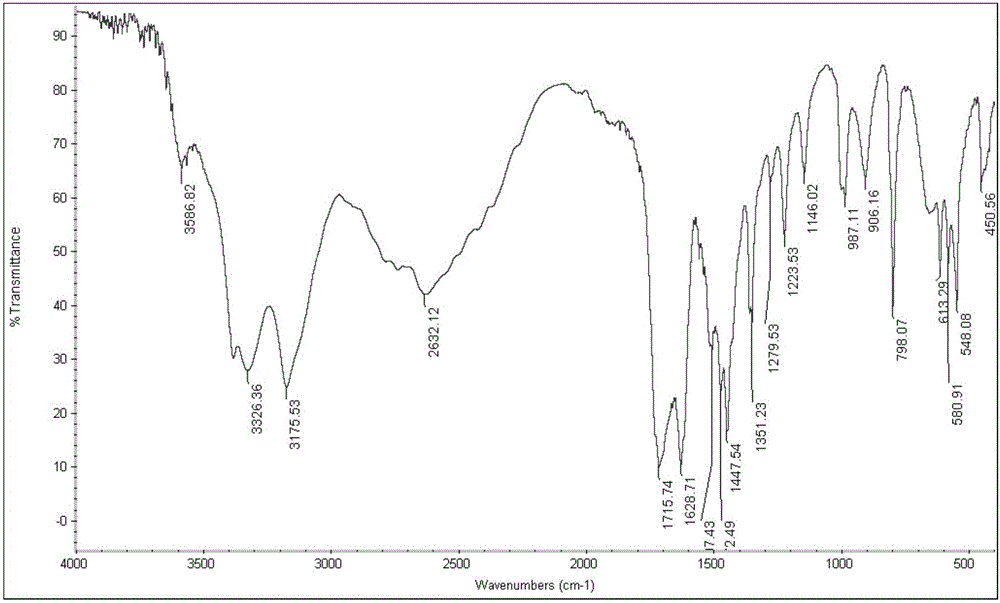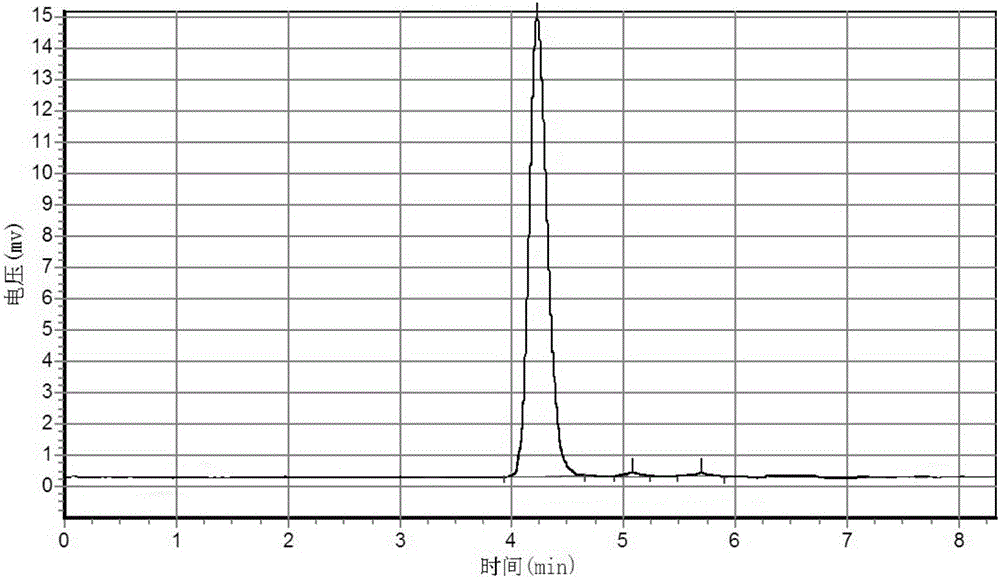5-azacytosine synthesis method
A technology of azacytosine and a synthesis method, applied in the field of organic synthesis, can solve the problems of increased difficulty in process safety control and waste liquid treatment, large amount of organic waste and waste water, high environmental pollution pressure, etc., and achieves easy biochemical degradation treatment, The effect of reducing production costs and reducing side reactions
- Summary
- Abstract
- Description
- Claims
- Application Information
AI Technical Summary
Problems solved by technology
Method used
Image
Examples
Embodiment 1
[0043] (1) Add anhydrous formic acid (99.5%) 1.5Kg, dicyandiamide 2.5Kg and p-toluenesulfonic acid catalyst (0.005Kg) successively in 10L autoclave. Under the condition of sealing and stirring, the reactor was pressurized and the temperature was slowly raised to 110° C. After the reaction was completed, the reaction temperature was slowly lowered to room temperature to obtain a white solid.
[0044] (2) Transfer the white solid to a 50L glass reactor, and add 10L of 5% dilute hydrochloric acid. Heat to reflux for 30 minutes until the solution becomes clear, heat the mixed solution through a filter cartridge to a crystallization kettle, add 30% ammonia water to the crystallization kettle to adjust the pH to 6, and precipitate white crystals. After centrifugation, dry in a hot air oven to obtain 5 -Azacytosine 2.8kg (yield is 85% based on dicyandiamide).
[0045] Depend on figure 1 with figure 2 It can be seen that the product prepared by the present invention is 5-azacytosi...
Embodiment 2
[0047] (1) Add anhydrous formic acid (98%) 1.3Kg, dicyandiamide 2.5Kg and p-toluenesulfonic acid catalyst (0.005Kg) successively in 10L autoclave. Under the condition of sealing and stirring, the reactor was pressurized and the temperature was slowly raised to 100° C. After the reaction was completed, the reaction temperature was slowly lowered to room temperature to obtain a white solid.
[0048] (2) Transfer the white solid to a 50L glass reactor, and add 10L of 5% dilute hydrochloric acid. Heat to reflux for 30 minutes until the solution becomes clear, heat the mixed solution through a filter cartridge to a crystallization kettle, add 30% ammonia water to the crystallization kettle to adjust the pH to 6, and precipitate white crystals. After centrifugation, dry in a hot air oven to obtain 5 -Azacytosine 2.65kg (yield is 80% based on dicyandiamide).
[0049] Depend on Figure 4 It was found that the purity was higher than 95% as can be seen by high performance liquid chrom...
Embodiment 3
[0051] (1) Add anhydrous formic acid (99.5%) 2.0Kg, dicyandiamide 2.5Kg and p-toluenesulfonic acid catalyst (0.005Kg) successively in 10L autoclave. Under the condition of sealing and stirring, the reactor was pressurized and the temperature was slowly raised to 120° C. After the reaction was completed, the reaction temperature was slowly lowered to room temperature to obtain a white solid.
[0052] (2) Transfer the white solid to a 50L glass reactor, and add 10L of 5% dilute hydrochloric acid. Heat to reflux for 30 minutes until the solution becomes clear, heat the mixed solution through a filter cartridge to a crystallization kettle, add 30% ammonia water to the crystallization kettle to adjust the pH to 6, and precipitate white crystals. After centrifugation, dry in a hot air oven to obtain 5 -Azacytosine 2.8kg (yield is 85% based on dicyandiamide).
PUM
 Login to View More
Login to View More Abstract
Description
Claims
Application Information
 Login to View More
Login to View More - R&D
- Intellectual Property
- Life Sciences
- Materials
- Tech Scout
- Unparalleled Data Quality
- Higher Quality Content
- 60% Fewer Hallucinations
Browse by: Latest US Patents, China's latest patents, Technical Efficacy Thesaurus, Application Domain, Technology Topic, Popular Technical Reports.
© 2025 PatSnap. All rights reserved.Legal|Privacy policy|Modern Slavery Act Transparency Statement|Sitemap|About US| Contact US: help@patsnap.com



